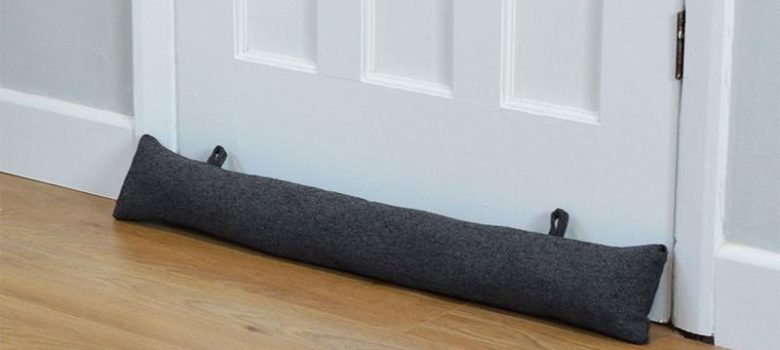
What is draught proofing?
Draught proofing (or draught exclusion) is one of the cheapest and easiest ways to cut energy costs in the home, whether you live in a house or a flat. The concept is really simple: stop cold air coming in and prevent warm air from escaping, using things like draught excluders. Keeping the warm air inside will save you money on your utility bills as the existing heating system will need to work less hard to keep the home at the required temperature.
Draughts or gaps in the home act like unwanted ventilation shafts, allowing cold air to seep in and hot air to escape. When the household heats their home, these uncontrolled ventilation gaps let expensive hot air escape.
Although more often than not, some heat escapes regardless of the actions of a householder, additional temporary draughts occur by leaving doors, windows and letterboxes open.
Potential savings from installing draught proofing
It is estimated that installing draught proofing measures in an average UK home could save the household £60 per year on heating bills.
According to the Energy Saving Trust, if every home were to do this in the UK, the total energy savings could be worth as much as £190 million, and the energy saved would heat nearly 400,000 homes.
You will be able to find draughts just about anywhere in your house that links directly to the outside. You could easily be in front of one now. They are found by doors, windows, loft hatches, keyholes, electrical fittings on the ceilings, under the floorboards, piping leading outside and any drilled holes for cabling that leads outside. Remember that day when you had that cable or Sky TV installed and the drilling that took place?
The best way to deal with these draughts is to close the gaps using draught excluders and block the holes.
Some rooms in the home need natural ventilation, such as bathrooms, kitchens or rooms with an open fire. These types of rooms generate a lot of condensation and by blocking the ventilation outlets, you may also encourage damp and mould to form, which may end up being unpleasant and costing you additional money to fix.
Draught proofing – DIY vs. professional jobs
Draught proofing pays for itself in just a couple of years in most cases, by reducing your energy consumption and therefore your energy bills. Draught proofing can be a fairly simple home DIY job, although for more complex measures, help may be required.
Obviously, if you are uncomfortable carrying out the work yourself we strongly recommend getting in a professional to complete the work regardless. A professional should be able to identify draughts very quickly, and will know what to fill them with, therefore saving you a lot of time and energy.
Think we missed something? Do you have a different opinion?
Comment below to get your voice heard…












is there any grants for draft proofing
Thank you. Always looking to draught proof my door and never quite sure how. Useful guide
Very good post. I’m going through some of these issues as
well..
Any chance of some real advice? Types of seal, application, ANYTHING?